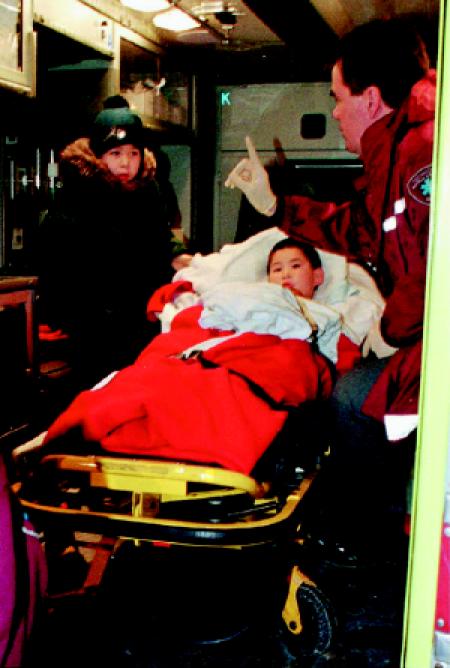The federal government's announcement of $100-million over 5 years to train Aboriginal health professionals is welcome news, but unlikely to make a big dent in the shortfall, medical insiders say.
“It sounds like a lot of money, but in fact it's not going to be that much once you do this and that over 5 years, and it's such a huge issue to deal with,” said Malcolm King, a principal investigator at the University of Alberta's Aboriginal Health Research Training Program.
In 1996, the Royal Commission on Aboriginal Peoples (RCAP) concluded that Canada needed another 10 000 Aboriginal health professionals — a 10-fold increase.
An estimated 150 physicians of Aboriginal heritage now practise in Canada, a modest increase over the past decade according to Bernice Downey, executive director of the National Aboriginal Health Organization.“We know it has increased over the years, but we need to do more work,” said Downey.
Health Canada has not announced how the $100-million funding for the Aboriginal Health Human Resources Initiative will be spent, except to say it aims to increase recruitment and retention and change curricula so that health professionals “are better equipped to address the cultural differences.”
“Everyone will be looking anxiously as to how that pot of money will unfold,” said Downey. She hopes the money will augment existing programs to boost enrolment. Much of that work, she said, begins long before college. For instance, children in remote and Aboriginal communities need greater exposure to math and science in their curriculum, and more encouragement from parents and teachers to choose nontraditional careers like medicine.
In 1988, the University of Alberta began a concerted effort to train Aboriginal doctors. To date there are 33 graduates and another 20 students enrolled in the 4-year program.
“There are other programs in the country, but we have certainly graduated the largest number in the shortest time frame,” said Anne-Marie Hodes, coordinator of the university's Aboriginal Health Care Careers Program.
But 4 or 5 new graduates a year isn't sufficient to fill the gap, says King. “We need all the medical schools in the country to be more active in programs to recruit and train Aboriginal health professionals.”
In Ontario, for instance, there are only 12 practising Aboriginal doctors and 16 medical students enrolled at five medical schools. The province needs at least 375 physicians, a September health conference at Six Nations in Oshweken, Ont., was told. Chief Roberta Jamieson will chair a committee of key health care players to develop a pre-med program for Aboriginal students at Ontario universities, including pre-admission and in-school support, and to devise ways to recruit more qualified students.
The $100 million from Ottawa is part of a $700-million commitment to Aboriginal health Prime Minister Paul Martin announced Sept. 13. — Amy Jo Ehman, Saskatoon

Figure. Critical shortage: Only about 150 physicians of Aboriginal heritage practise in Canada. Photo by: Canapress, R. Galbraith


